What is Paid Media: Types, Benefits, Best Practices and Examples
Paid media is not just your brand’s ticket to heightened visibility, it’s the ultimate remedy for standing out in the competitive market.
In a world where every brand vies for attention, planning the perfect marketing strategy for your brand can feel like an overwhelming chore.
You want to reach more people, you want to say the right thing at the right time to the right people all while leaving a lasting impression.
But where to start?
The truth is, in today’s competitive world, organic reach alone just doesn’t cut it. That’s where paid media comes in.
Did you know that TV ads (30.6%), social media ads (27.7%), website ads (22.3%), search engine ads (31%), mobile ads (20.6%), video ads (16.9%), and consumer review sites (22%), all these paid media strategies rank among the top 15 ways people discover new brands?
Yes, Paid media is an all-rounder like that.
It helps you reach more people (exactly the ones you want), and achieve your marketing goals faster. Whether you want to build brand awareness, attract more website visitors, or boost sales, paid media can be your secret weapon.
In this blog, we’ll delve into the world of paid media, breaking down the different paid media types, exploring their benefits, and sharing practical tips to help you craft effective paid media campaigns that deliver real results.
Whether you’re a small business owner or a marketing pro, we promise this guide will have something valuable for you.
So, without further ado, let’s begin.
What Is Paid Media?
Paid media refers to any marketing effort where you pay for the placement of your promotional content like sponsored social media ads, website ads, pop-ups, PPC (pay-per-click), and such. This, in turn, helps brands gain better visibility, engagement, recognition, and revenue.
Now that we’ve got a grip on what paid media is, let’s zoom out a bit and look at the big picture.
Have you ever heard the saying ‘Good Things Come In Threes’?
Well, it works in the marketing realm as well.
When it comes to putting together a well-rounded and effective digital marketing strategy, paid media is not the lone soldier, there are two others that combined together give you a winning chance to stand out among your competitors and make a significant impact.
They are known as, Paid media, Owned media, and Earned media.
Think of it like this: paid, owned, and earned media are the three main players in your digital strategy. Each has its own unique strength and works together to help your brand achieve its branding goals.
Interested to know more?
Read along to find what makes them different from each other and how they can help you become the preferred choice of your target audience.
The Difference Between Paid, Owned, and Earned Media
1. Paid Media
What is Paid Media?
As already covered above, Paid Media is a form of marketing where you pay to promote your content across various online channels.
Purpose
Paid media helps you reach your target audience, improve conversion rates, and maximize your digital marketing budget’s efficiency.
Examples:
- Paid Search: These are ads that appear when consumers actively search for your products, services, or brand.
- Display Advertising: These ads are shown to consumers who might be interested in your offerings but aren’t actively searching for them.
2. Owned Media
What is Owned Media?
Owned media refers to the digital content your company creates and controls. Think of it as your digital real estate—you own and manage it.
It includes everything from your website, blog, and emails, to your social media posts.
Purpose
The primary goal of owned media is to increase brand awareness outside of paid efforts.
3. Earned Media
What is Earned Media?
Earned media is the content that others create about your brand. It’s like getting free publicity—you don’t pay for it, but it adds value.
It includes reviews, social mentions, and word-of-mouth recommendations.
Purpose
It fulfills the purpose of building credibility and trust for your brand because it comes from external sources.
Examples
- Reviews: When consumers share their feedback or experience with your product or service.
- Social Mentions: When people talk about your brand on social media.
So, now that you’ve become acquainted with them, let’s get back to our next topic of discussion – Paid media types.
Think of paid media types as tools in your brand’s kit. Each type has its job – some target specific groups, others boost engagement. In a nutshell, they’re one of the most effective marketing tactics if used well.
What Are The Different Types of Paid Media?
While the term “paid media” often gets confused with PPC advertising, its scope extends far beyond just search engine ads. There are various types of paid media, and we will discuss the six types that are most commonly used by marketers and brands.
- Paid Search
- Paid Social Media
- Display Advertising
- Video Advertising
- Native Advertising
- Programmatic Advertising
Let’s explore the different types of Paid media to understand which ones are better suited for which brand category.
1. Paid Search
Paid search involves placing ads on search engines like Google, Bing, Yahoo, Ask, AOL search, and such. These ads appear when users actively search for specific keywords related to your products or services.
And if you didn’t know, Google is the leading search engine in market share, with its sites generating around 61% of user searches in the United States.
While, Microsoft (Bing) is the second leading search engine, generating almost 27% of user searches across its network of sites.
So, imagine the potential of these two search engines and the opportunity for your brand to gain such huge visibility.
What is Paid Search Best For?
Paid search is effective for both B2B (business-to-business) and B2C (business-to-consumer) brands. It’s particularly useful for capturing high-intent users actively looking for solutions.
Aside from shopping ads, text is the most common type of ad format for paid search.
2. Paid Social Media
Paid Social includes running ads on various social media platforms like Facebook, Instagram, LinkedIn, X, TikTok, YouTube and Snapchat. These ads target specific audiences based on demographics, interests, and behavior.
With Social media ad spending projected to reach $219.8 billion in 2024, it’s the need of the hour for brands to opt for social media advertising.
To put more emphasis on this, take a look at the following statistics,
- Facebook has the largest reach of all social media advertising platforms in the U.S., with Instagram and TikTok having the second and third largest reach respectively.
- Instagram’s advertising platform is utilized by more than 200 million businesses.
- LinkedIn boasts a potential advertising reach that extends to over 950 million users globally.
- X ads have a potential reach of 528.3 million active users.
- Users on TikTok are 1.5 times more inclined to make an immediate purchase after discovering something on the platform, as opposed to users on other social media platforms.
- After watching ads on Snapchat, users are 45% more likely to recommend the advertised brand to their friends, and 34% more likely to purchase the products advertised.
- After encountering a brand on YouTube, 70% of viewers have gone on to make a purchase.
One thing that is loud and clear from these statistics is that your target audience and your competitors both are on these platforms treating it as the new shopping destination.
So if you aren’t there already, you should get there… like yesterday.
Also read: 25 Useful Tips For Building A Strong Social Media Presence
What is Paid Social Best For?
Platforms like Facebook, Instagram, X, Snapchat, and TikTok are excellent for B2C brands to reach consumers directly.
Whereas, LinkedIn is a powerful platform for B2B marketing, especially when targeting professionals and decision-makers.
YouTube, on the other hand, is suitable for both B2C and B2B brands.
Also read: How Influencer Marketing Has Changed Consumers’ Decision-Making
3. Display Advertising
Display ads are visible on websites, apps, and various other online platforms. They can be in various formats, such as banner ads, native ads, retargeting ads, pop-up ads, video ads, or other interactive elements.
Also, did you know that banner ads, native ads, and social media ads are considered to be the top display ad types?
No?
Well, now you do.
What is Display Advertising Best For?
Display ads work well for B2C brands for brand awareness and retargeting campaigns.
For B2B brands, on the other hand, consider display ads on industry-specific websites or platforms relevant to your target audience.
4. Video Advertising
I’m sure you already know that video ads are displayed on platforms like YouTube, social media, and websites. They can be skippable or non-skippable.
But what you didn’t know is that Advertising (57%) is the second most common reason for marketers to create video content.
And that’s not it. Social video advertising spending is set to hit $79.28 billion by 2024.
It tells you two things –
1) Video content is the most popular type of media that all kinds of people love and look for.
2) It is a really effective tool to use as the preferred form of media in ads.
What is Video Advertising Best For?
For B2C brands, video ads are engaging and effective for showcasing products, brand storytelling, and creating emotional connections.
For B2B brands, video ads can be used to explain complex concepts, demonstrate software, or share success stories.
5. Native Advertising
Native ads seamlessly integrate with the platform’s content, matching the appearance and style of the surroundings.
According to Outbrain, native ads get 53% more attention than display ads.
It includes In-feed, sponsored/recommended content, search & promoted listings, promoted stories, and so on.
What is Native Advertising Best For?
Native ads work well for both B2C and B2B brands. They provide a non-disruptive way to reach audiences without appearing overly promotional.
6. Programmatic Advertising
You might have heard about it less than the other types or maybe not at all.
However, according to the latest estimates, programmatic advertising is expected to reach 779 billion by 2028, so you might want to consider knowing about it more.
For starters, for those of you who aren’t familiar with it, Programmatic ads are automated ads and use algorithms to buy ad space in real-time. They optimize targeting and budget allocation.
Think of it like this:
Imagine buying groceries. Usually, you walk around the store, pick what you want, and pay at the checkout.
But what if there was a robot shopper who could automatically find the best deals based on your preferences and deliver them straight to your cart?
That’s kind of how programmatic advertising works.
- It scans millions of websites and apps in seconds, looking for the best places to show your ad.
- Bids on ad space in real-time trying to get the best price for you.
- Targets your ads to specific people based on their interests, demographics, and online behavior.
- Track how your ads are performing and adjust them automatically for better results.
What is Programmatic Advertising Best For?
Programmatic advertising benefits both B2C and B2B brands. It ensures efficient ad placements across various channels.
With this, we come to the end of the Paid media types.
Remember that the effectiveness of each type of paid media depends on factors like your target audience, campaign goals, and budget. So, make sure to choose the channels that align with your brand’s objectives and resonate with your audience.
Examples of Different Paid Media Types
Now that you’ve learned about the most effective types of paid media, here are their respective examples.
For Paid Search-
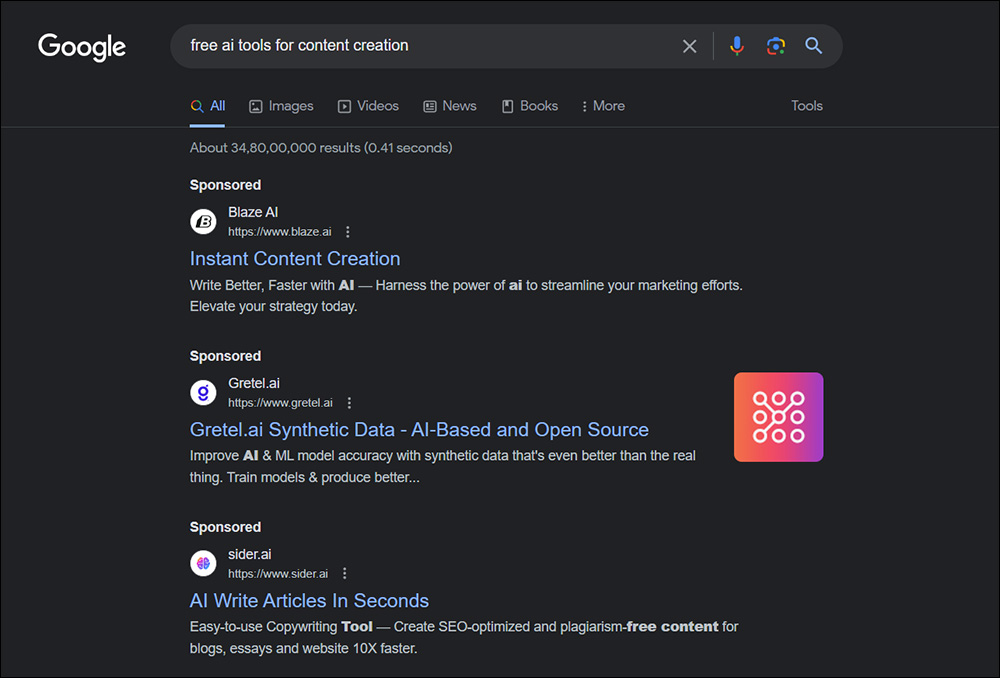
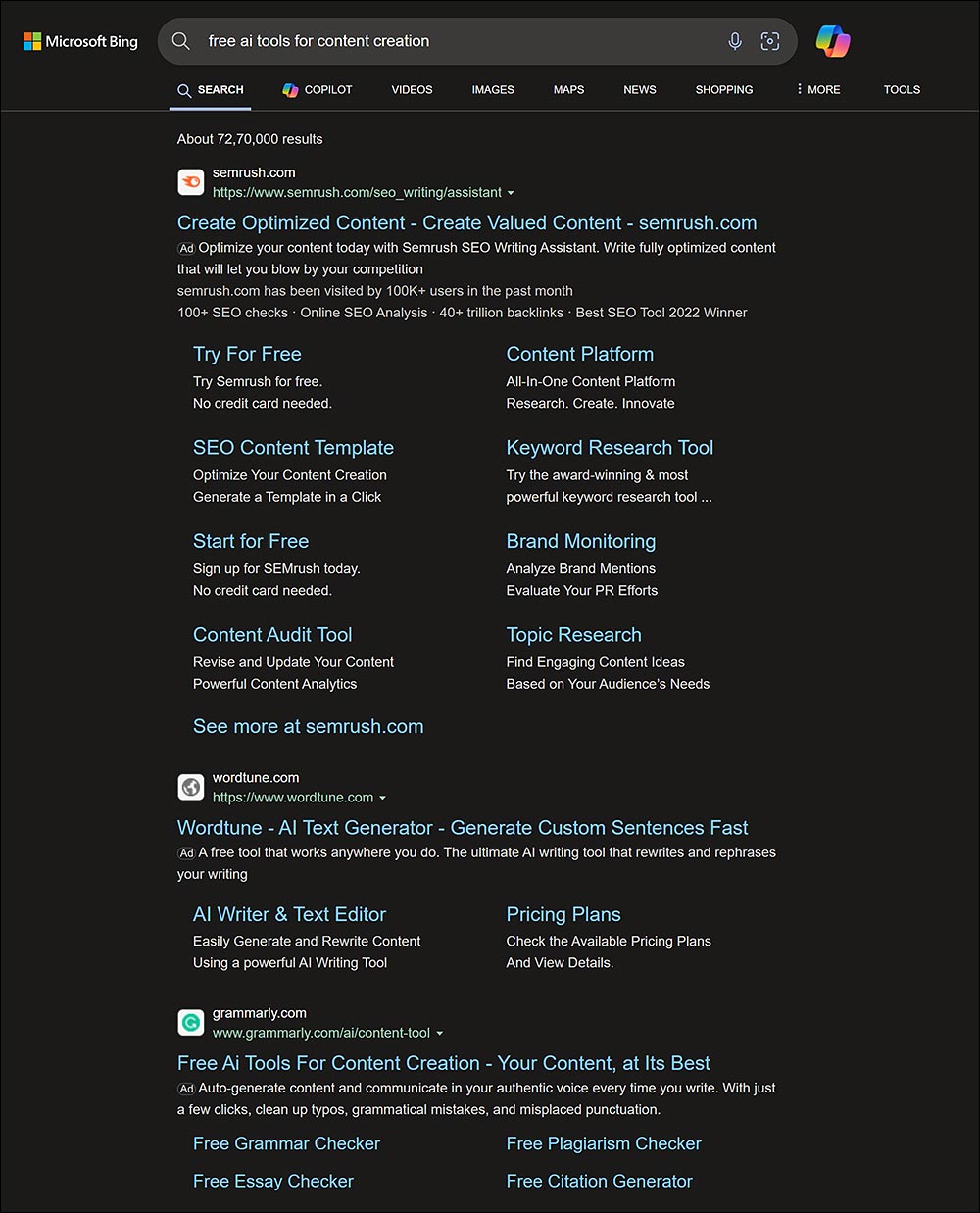
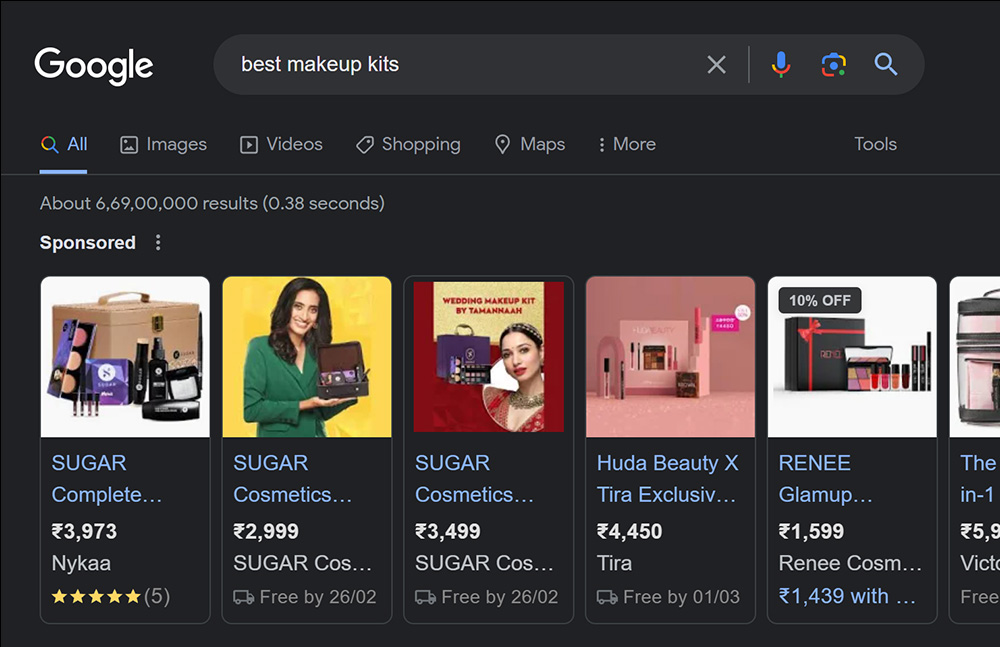
For Paid Social –
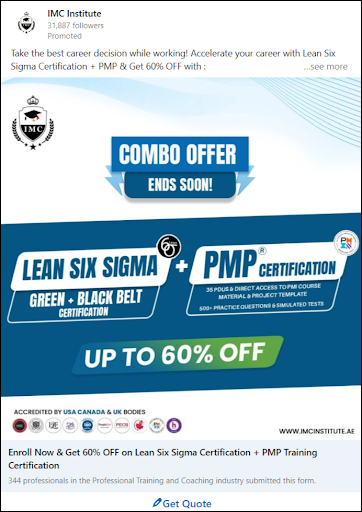
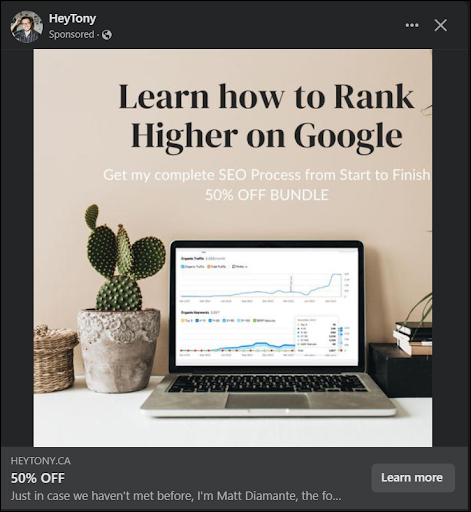
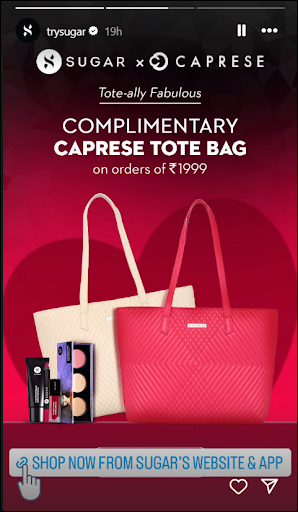
Display Advertising –
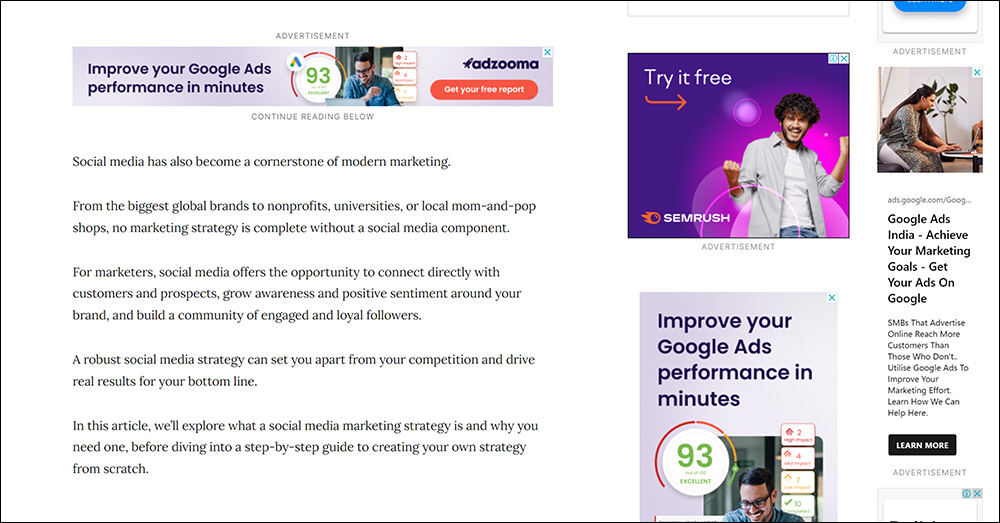
Affiliate Marketing –
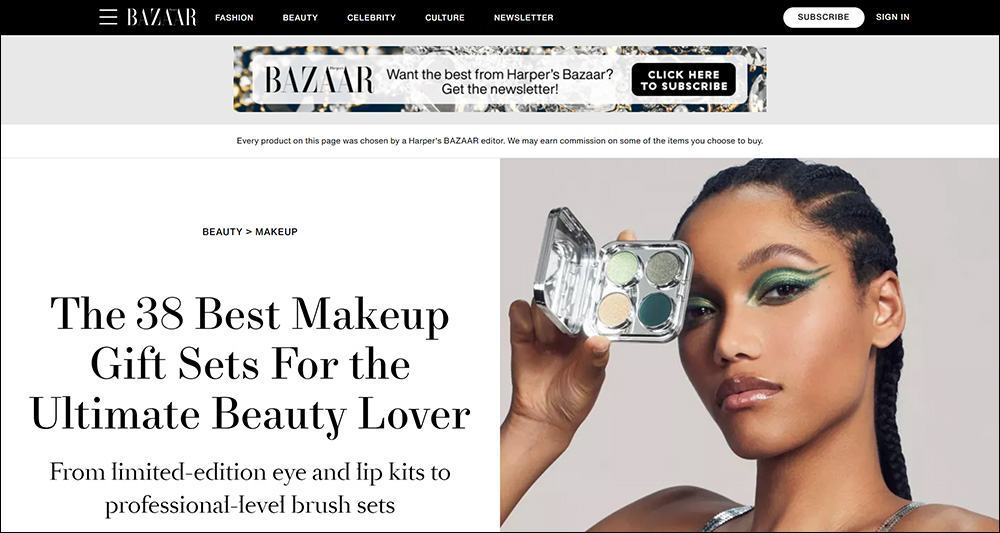
What Are The Benefits Of Paid Media?
Too many to count but we have still listed down some to help you understand how paid media enhances your marketing efforts.
1. Targeted Reach
Paid media allows you to reach more people than you could through your organic channels (like your website or social media pages).
Benefits
- Precise Targeting: You can narrow down your audience based on interests, demographics, and even purchase history.
- Focused Exposure: Reach the right people at the right time, increasing the chances of engagement and conversions.
2. Immediate Visibility
Unlike organic methods (such as SEO), paid media provides instant visibility.
Benefits
- Quick Results: Paid ads start working as soon as they’re live, driving traffic and brand awareness immediately.
- Time-Sensitive Campaigns: Perfect for time-bound promotions or events.
Also read: How to Create a Winning SEO Strategy in 2024 and Dominate the SERPs
3. Control Over Ad Appearance
When you pay to advertise, you have more say over how your ad looks and where it appears.
Benefits
- Brand Consistency: Maintain a consistent brand image across your paid media campaigns.
- A/B Testing: Easily test different ad creatives and optimize for better performance.
4. Cost-Effective Targeting
Paid media allows you to allocate your budget efficiently.
Benefits
- Pay for Performance: You only pay when users interact with your ads (clicks, impressions, conversions).
- Budget Control: Set daily or campaign-level budgets to manage costs.
5. Increased Brand Awareness
Paid media campaigns increase your brand’s visibility.
Benefits
- Wider Audience: Reach beyond your existing followers and tap into new audiences.
- Brand Recall: Consistent exposure reinforces brand recall.
6. Lead Generation and Sales Boost
Paid media drives targeted traffic, leading to potential leads and sales.
Benefits:
- Conversion Opportunities: Capture leads directly through landing pages or e-commerce platforms.
- Revenue Growth: Increased sales contribute to business growth.
In summary, paid media is a powerful tool for expanding your brand’s reach, driving traffic, and achieving specific marketing goals. Whether you’re a B2C or B2B brand, implementing paid media into your marketing strategy can help you achieve significant growth.
Now, moving ahead, we can’t end this guide without mentioning the key points that you need to keep in mind while framing the Paid media strategy for your brand.
So here you go,
Paid Media Strategy Best Practices
1. Choose the Right Channel
Why It Matters: Buying ad space without considering the best channel risks low ROI.
Actionable Steps:
- Platform Selection: Choose the ideal platform for your content. Consider search engine results pages (SERPs), LinkedIn, Twitter, Facebook, and other social media channels.
- Audience Insights: Understand your audience demographics. Younger users such as Gen Z and Gen Alpha favor Instagram, Snapchat, and TikTok, while older leads engage more on Facebook and LinkedIn.
- Data Utilization: Leverage data and analytics from each platform to refine your targeting strategy.
2. Customize Your Content
Why It Matters: Content should align with the platform and resonate with the target audience.
Considerations:
- User Intent: Understand what users seek on each channel. Craft content that meets their needs.
- Platform-Specific Offers: Customize your messaging. For instance:
- LinkedIn: Promote technical white papers.
- Instagram: Highlight visually appealing content.
- Mid-Funnel Websites: Offer promo codes for product adoption.
Also read: 5 Tips For Writing Compelling Ad Copy That Converts [With Examples]
3. Broaden Your Media Mix
Why It Matters: Relying solely on one channel limits your reach and effectiveness.
Benefits of Diversification
- Wider Reach: Explore various channels—paid search, social media, display ads, and more.
- Audience Segmentation: Different platforms attract distinct user segments.
- Risk Mitigation: If one channel underperforms, others can compensate.
4. Set Your Budget
Why It Matters: Setting a clear budget ensures that your paid media efforts are financially sustainable and aligned with your overall marketing goals.
Actionable Steps:
- Allocate Resources: Determine how much budget you can allocate to paid media campaigns. Consider factors such as company size, campaign objectives, and available funds.
- Campaign-Specific Budgets: Break down your budget by campaign or initiative. Allocate funds based on priority, seasonality, and expected returns.
- Monitor Spending: Regularly review your spending against the allocated budget. Adjust as needed to optimize performance.
5. Establish Data-Driven Goals
Why It Matters: Data-driven goals provide a clear direction for your paid media strategy. They help measure success and guide decision-making.
Actionable Steps:
- Define Key Metrics: Identify relevant metrics such as click-through rates (CTR), conversion rates, return on ad spend (ROAS), and cost per acquisition (CPA).
- Set SMART Goals:
Specific: Clearly define your goals.
Measurable: Ensure that your goals can be measured with KPIs.
Achievable: Set realistic targets based on historical data and industry benchmarks.
Relevant: Align goals with overall business objectives.
Time-Bound: Put down proper timelines for achieving each goal.
To end this guide on an insightful note that we’ve tried our best to maintain throughout the blog, here’s a list of KPIs (key performance indicators) to monitor and analyze the performance of your paid media campaigns.
Essential KPIs for Your Paid Media Advertising Campaigns
- Cost per Click (CPC): Measure the cost of each click on your ads.
- Click-Through Rate (CTR): Evaluate the percentage of users who click on your ad after seeing it.
- Cost per Acquisition (CPA): Calculate the cost of acquiring a customer or lead.
- Conversion Rate (CVR): Track the percentage of users who complete a desired action (e.g., sign up, purchase).
- Return on Advertising Spend (ROAS): Measure revenue generated per dollar spent on ads.
- Cost per Thousand Impressions (CPM): Assess the cost of 1,000 ad impressions.
- Ad Impressions: Count the number of times your ad is displayed.
- Ad Engagements: Monitor interactions with your ad (likes, shares, comments).
- Ad Reach: Evaluate the unique audience exposed to your ad.
- Quality Score: Google Ads metric assessing ad relevance and landing page experience.
- Video View Rate (VVR): For video ads, track the percentage of views relative to impressions.
- Brand Awareness Lift: Measure the impact of your ads on brand awareness.
- Viewability: Assess how often your ad is actually seen by users.
Also read: How to Set Up Google Ads Enhanced Conversions With GTM [Just 3 Steps]
Conclusion
Paid media holds a significant place in modern marketing. A recent study by PR Newswire reports that the global digital paid advertising market is expected to reach $786.2 billion by 2026.
So make sure that you take advantage of it.
Remember to align your strategy with your business goals and objectives, leverage data and audience signals, and regularly monitor, analyze, and optimize the performance of your paid media campaigns.
Additionally, make sure to focus on user-centric content, adapt to changing trends, and continuously refine your approach.
This way your brand will gain maximum reach, recognition, and ROI.
If you’re interested in finding more ways to grow your brand, you can check out our other blogs here.
Until next time.


Wow, this is a super informative breakdown of paid media! I especially liked the way you explained the different types with real-life examples. It can seem complicated at first, but this post makes it clear and actionable.
The social media ad spend statistics are eye-opening! Makes you realize how important it is to be on those platforms these days.
Thanks for sharing such a valuable resource!
Thoughtful and comprehensive, reflecting deep consideration of the topic and providing a thorough analysis.
Insightful and practical, offering valuable advice that readers can readily incorporate into their lives.
Your writing is so engaging and easy to read It makes it a pleasure to visit your blog and learn from your insights and experiences
I have been struggling with this issue for a while and your post has provided me with much-needed guidance and clarity Thank you so much
As a fellow blogger, I can appreciate the time and effort that goes into creating well-crafted posts You are doing an amazing job
I just wanted to take a moment to express my gratitude for the great content you consistently produce. It’s informative, interesting, and always keeps me coming back for more!
This post truly brightened my day! I appreciate how you delve into the topic with such positivity and clarity. It’s refreshing to see content that not only informs but also uplifts the reader. Your writing style is engaging and always leaves me feeling inspired. Keep up the fantastic work!
Keep up the amazing work! Can’t wait to see what you have in store for us next.